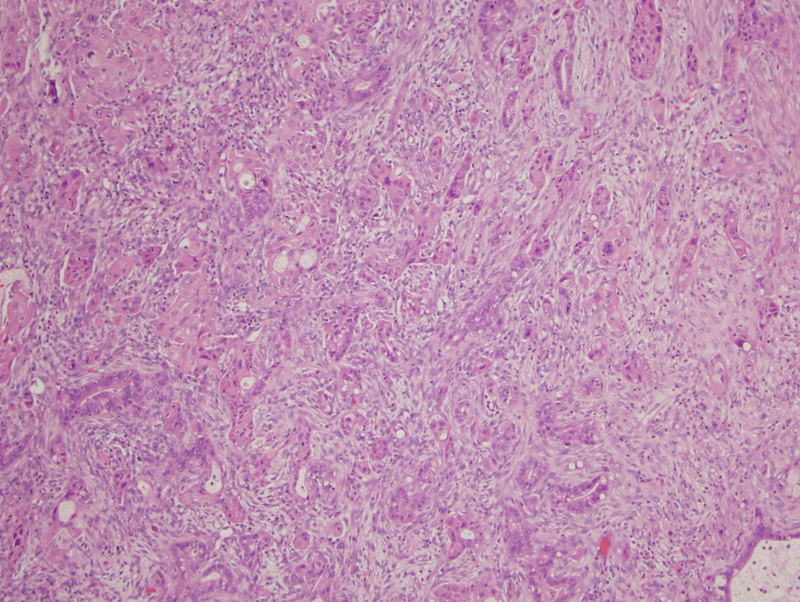

Neoplastic squamous cells infiltrate the pancreatic parenchyma in angulated cords.
The squamous component blends in with the tubuloglandular component. Note the pleomorphism of both the squamous and glandular components.
Another image of the admixture of the glandular and squamous components. The adenocarcinoma appears similar to the usual ductal type of adenocarcinoma of the pancreas. The two components may be intimately admixed as shown here, or less so.
The neoplastic squamous component can form broad sheets and be the dominating feature. A transition from squamous metaplasia to squamous carcinoma has not been documented in the literature.
Adenosquamous carcinoma of the pancreas is considered a variant of ductal adenocarcinoma. The neoplastic cells assume both glandular and squamous architecture. In some instances, the squamous component may be prominent, but careful sampling will usually reveal remnant glands. Pure squamous cell carcinoma of the pancreas is extremely rare.
The presence of a K-ras mutation in these tumors suggests a ductal origin for the adenosquamous carcinoma. This does not have specific prognostic or diagnostic implications.
In a long term study comparing 415 adenosquamous carcinoma of the pancreas to 45,693 adenocarcinomas of the pancreas, it was discovered that adenosquamous carcinomas are more likely to arise in the pancreatic tail, and they are also more like to be poorly differentiated and node positive. Thus, the long-term outlook for this variant is worse than for usual type ductal adenocarcinoma of the pancreas (Boyd).
Boyd CA, et al. 415 Patients with Adenosquamous Carcinoma of the Pancreas: A Population-Based Analysis of Prognosis and Survival. J Surg Res. 2011 Jul 7.